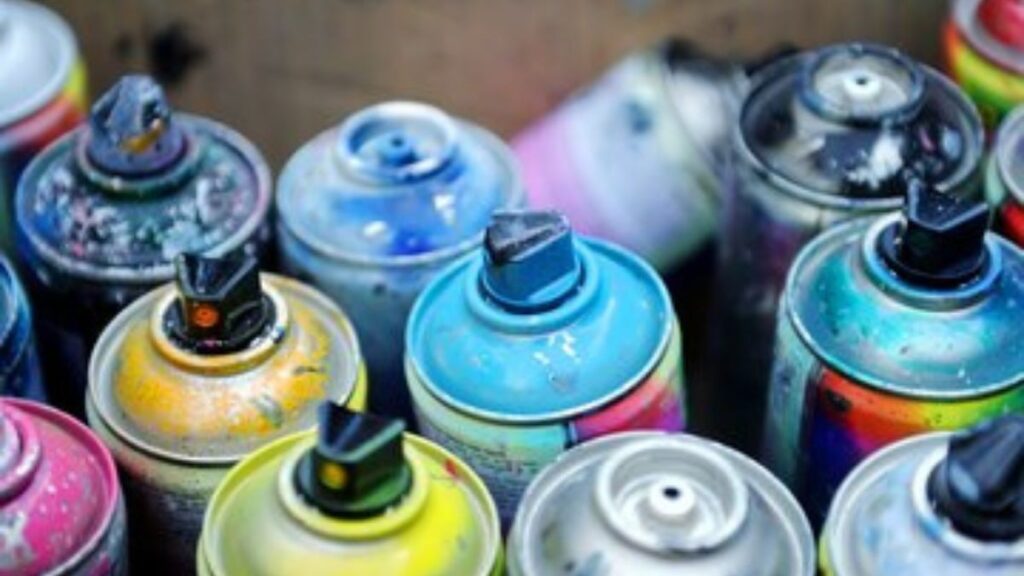Clear coat aerosol sprays are a staple for anyone looking to protect and enhance surfaces, whether you’re touching up a car, sealing a piece of furniture, or adding shine to a craft project. The trusty Aerosol Can makes it easy to apply a durable, glossy finish without dragging out heavy equipment. But here’s the catch—not all clear coat aerosol sprays are the same. From glossy to matte, automotive to general-purpose, the type you choose can make or break your project. As someone who’s spent countless hours testing and using these products, I’m here to break down the different types of clear coat aerosol sprays, share some practical tips, and answer common questions. Let’s dive in and find the perfect aerosol can for your next project!
Understanding Clear Coat Aerosol Sprays
Clear coat aerosol sprays are designed to protect surfaces while adding a polished look. Delivered through an aerosol can, they’re user-friendly and ideal for small-scale jobs where precision matters. These sprays come in various formulations, each tailored to specific surfaces and finishes. Whether you’re a DIY newbie or a seasoned pro, knowing the differences between types can save you time, money, and a whole lot of frustration.
The key to a great application often lies in the quality of the aerosol can itself. A reliable aerosol valve ensures a smooth, even spray, while a poorly designed one can lead to clogs or uneven coats. Choosing cans from reputable suppliers ensures consistent performance, which is critical for achieving that professional-grade finish.
Types of Clear Coat Aerosol Sprays
Let’s break down the main types of clear coat aerosol sprays you’ll encounter:
- Glossy Clear Coats:These are the go-to for a shiny, reflective finish, especially in automotive applications. They’re perfect for cars, motorcycles, or anything where you want that showroom sparkle. Glossy sprays are formulated to resist UV rays and scratches, making them ideal for outdoor use. However, they can highlight surface imperfections, so prep work is crucial.
- Matte Clear Coats:If you’re after a non-reflective, subtle finish, matte clear coats are your best bet. They’re popular for furniture, crafts, and even some automotive parts where a low-gloss look is desired. These sprays hide minor surface flaws better than glossy ones but may not offer the same level of UV protection.
- Satin Clear Coats:Sitting between glossy and matte, satin clear coats offer a soft sheen that’s versatile for both indoor and outdoor projects. They strike a balance, providing decent protection without the high shine of glossy coats or the flat look of matte ones.
- Specialty Clear Coats:These include high-temperature sprays for engine parts, flexible coats for plastics, or even anti-slip formulas for floors. Specialty sprays are tailored for niche applications, so always check the can’s label to ensure it matches your project’s needs.
Pro Tip: When choosing a clear coat, test it on a small, inconspicuous area first. For example, spray a corner of your project to see how the finish looks under your lighting conditions. This can prevent surprises, especially with matte or satin coats, which can vary in appearance.
Application Tips for Different Types
Applying clear coat from an aerosol can is straightforward, but each type has its quirks. Start with a clean, sanded surface—use 800-1200 grit sandpaper for automotive projects or 400-600 for wood. Wipe down with a tack cloth or mineral spirits to remove dust. Shake the can for at least a minute to mix the contents thoroughly; a poorly mixed can leads to streaks or cloudiness.
For glossy clear coats, apply 2-3 light coats, holding the can 8-10 inches from the surface. Use sweeping motions to avoid drips. Matte and satin coats can handle slightly heavier applications but still benefit from multiple thin layers. Specialty coats, like high-temperature ones, often require longer drying times between coats—check the can for specifics.
Insider Secret: To prevent overspray on intricate projects, like model cars or furniture details, mask off areas with painter’s tape and newspaper. For extra precision, cut a small hole in a piece of cardboard and spray through it to create a makeshift stencil. This keeps the spray focused and your lines clean.
Comparing Performance and Durability
Glossy clear coats typically offer the best durability for outdoor use, thanks to their UV resistance and tough finish. They’re ideal for cars or garden furniture exposed to the elements. Matte and satin coats, while durable, may need reapplication sooner in harsh conditions. Specialty coats vary widely—high-temperature formulas, for instance, can withstand heat but may not resist scratches as well as glossy ones.
The quality of the aerosol valve plays a huge role in performance. A high-quality valve ensures a consistent spray pattern, reducing waste and improving coverage. For businesses sourcing aerosol cans, partnering with suppliers who prioritize precision manufacturing, like those at Aerosol Can, can make a big difference in meeting demand.
Troubleshooting and Maintenance
Even with the best aerosol can, things can go wrong. If your glossy coat looks orange-peely, you might be spraying too far away or in dry conditions. Adjust your distance to 8-10 inches and ensure moderate humidity. For matte coats, cloudiness can occur if you spray too heavily—stick to light, even coats. If your can clogs, clean the nozzle by turning it upside down and spraying until only propellant comes out.
Quick Fix: If you get a run or drip, let it dry fully, then sand it out with 1500-grit sandpaper and reapply a light coat. Patience here saves the day!
Frequently Asked Questions (FAQ)
- Which clear coat type is best for automotive use?
Glossy clear coats are typically best for cars due to their UV resistance and high shine. Ensure the surface is well-prepped to avoid highlighting imperfections. - Can I mix different types of clear coat aerosol sprays?
It’s not recommended. Different formulations may not bond well, leading to peeling or cracking. Stick to one type for the entire project. - Why does my aerosol can keep clogging?
Clogs often stem from low-quality aerosol valvesor improper storage. Store cans upright and clean the nozzle after each use. Sourcing high-quality cans from reliable suppliers ensures consistent performance and meets demand effectively. - How long should I wait between coats?
Most clear coats require 5-10 minutes between coats to flash off. Check the can’s instructions, as specialty coats may need longer. - Can I polish a matte clear coat?
Polishing a matte coat will add shine, defeating its purpose. If you want a glossy finish, opt for a glossy clear coat instead.
Wrapping It Up
Choosing the right clear coat aerosol spray comes down to understanding your project’s needs and mastering the application process. Whether you’re going for a glossy automotive finish, a subtle matte look, or a specialized coating, the right aerosol can makes all the difference. By focusing on prep, technique, and quality cans with reliable aerosol valves, you’ll achieve results that look pro without the pro-level hassle. So, pick your spray, test your technique, and transform your project with confidence!







